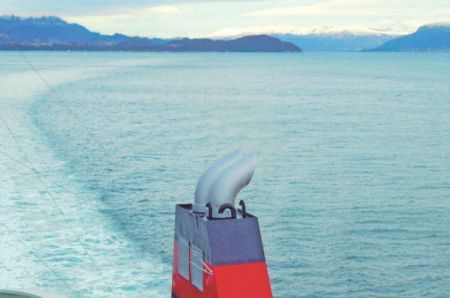
Possible pathways to reduce CO2 emissions from shipping are just published in a new position paper from DNV Research and Innovation, giving directions for more environmentally friendly seaborne trade.
The shipping sector is quickly becoming responsible for an increased part of the world’s carbon dioxide emissions, due to its heavy dependency on fossil fuels combined with growth in international seaborne trade. CO2 emissions from ships could count for at least 10% of global emissions in 2050, as compared to 3% today, if measures are not taken. With rising fuel prices and impending environmental regulations, the pressure is on for more efficient and environmentally friendly ships.
DNVs pathways study shows a doubling of present CO2 emissions by 2050 if we do nothing. It further shows that uptake of operational and technical measures combined with biofuels and LNG give a cost effective CO2 reduction potential of 50% in 2050. However, if CO2 emissions from shipping are halved by 2050, the relative share of global emissions contributed by shipping would still be double of what it is today, since other industries improve. Hence, more must be done to stay at par.
“If shipping should be required to reach emission levels in 2050 consistent with a global 2oC stabilisation target, we need to do more than stabilising emissions at present level. To achieve the 2oC target, the shipping sector must reduce CO2 emissions by 60 % from today’s emission level”, says Magnus Strandmyr Eide, Senior Researcher at DNV Research & Innovation and main author of DNVs pathways study.
The study has identified two plausible pathways for the 2oC target for shipping; either allowing for nuclear power, or by providing financial incentives for biofuel. It is realised that other pathways are possible, e.g. by including technologies currently very costly or immature, or through technological breakthroughs which are not identified, but which should be expected. From the existing alternatives, the introduction and use of biofuels stands out as the best option, considering the overall environmental, safety and security impacts.
Widespread use of biofuel in shipping depends on price, incentives and availability in sufficient volume. To capitalise on the potential, action must be taken by ship-owners, technology developers and regulators. This includes development of full scale on board prototyping and testing, as well as infrastructure development for bunkering.
We use cookies to improve your experience. By continuing to use our site, you accept our Cookies, Privacy Policy,Terms and Conditions. Close X